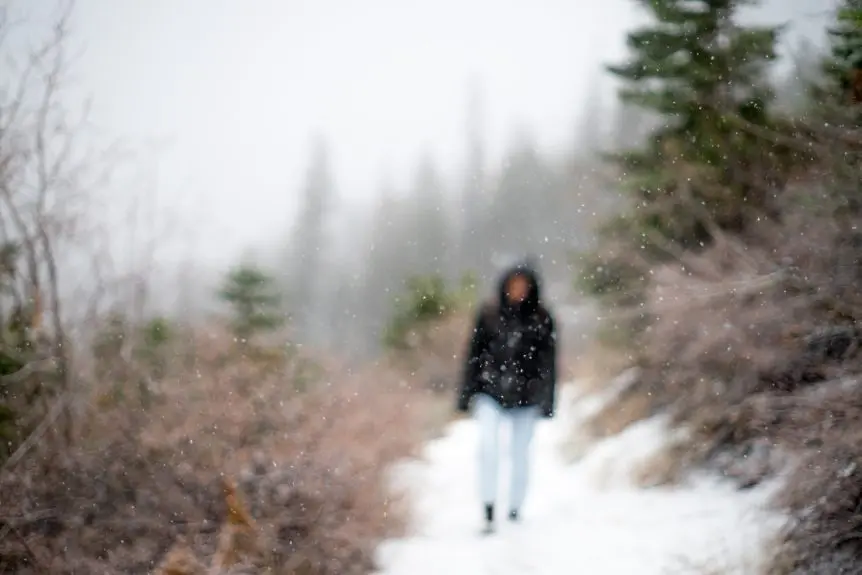Have you ever wondered who has the right of way on the trails? Yes, there is etiquette on the trails that can make it safer for everyone sharing the trails. As the use of trails has exponentially grown during the last year, knowing trail etiquette is more important than ever.
We have put together a brief overview of trail etiquette to assist those who might be brand new, out of practice, or simply in need of a refresher on how to ensure these trails remain open for everyone to enjoy.
Hikers vs. Bikers
Since mountain bikes are considered more maneuverable than hikers’ legs, bikers are generally expected to yield to hikers on the trail. However, because those mountain bikes often move considerably faster than said legs, it’s usually easier for hikers to yield the right of way—especially if a mountain biker is huffing and puffing up a challenging incline. A biker should never expect a hiker to yield, though. Because mountain bikers move faster, hikers should also be aware of their surroundings on shared trails. Conscientious mountain bikers will call out as they come down steep slopes or blind switchbacks and should also let you know if other bikers are following them.
Cyclists are required to have and use a bell. Pedestrians should be alert for bells and “on your left” calls and shift to the right of the trail to allow the cyclist(s) to pass safely.
Pedestrians wearing headphones in multi-use spaces should have music at a level where they can still hear and respond to their surroundings.
Hikers/Bikers vs. Horses
When hiking/running/biking, yield to horses on the trail since horses can have a more challenging time maneuvering the trail. Give the horses as broad a berth as possible, and make sure not to make abrupt movements as they pass. Talk calmly when approaching to avoid startling the animal.
Uphill vs. Downhill
The official rule is that people going uphill have the right of way. In general, hikers heading up an incline have a smaller field of vision.
Passing
A simple “on your left” is often the best way to announce your presence if you’re about to pass someone from behind. The individuals being passed should step right to allow passing.
Groups
Trail etiquette is even more critical when you’re hiking in a group. Always hike single-file, never taking up more than half the trail space, and stay on the trail itself.
Multi-Use Spaces/Off-Leash Areas
With hikers, runners, cyclists, and dogs sharing the same space, it is important to look out for one another.
Cyclists
- Bicycles must have a working bell. Park rangers can issue a $100 ticket to trail users who do not have one.
- Bike riders must sound their bell before passing slower trail users. Park rangers can issue a $250 ticket to trail users who fail to alert people ahead of them before passing.
- You can slow down when you approach slower users and pass on the left side.
- Obey trail signs and park closures.
(Info is taken from the city of Edmonton’s website)
https://www.edmonton.ca/transportation/cycling_walking/shared-pathways.aspx
Dog Owners
- Dog owners should look out for other users.
- The City has a multi-use policy, so expect to share off-leash areas with people who don’t bring dogs.
- Keep your dog within your sight.
- Have your leash always ready, even in off-leash areas
- Remember to use your pooper scooper
(Info is taken from the city of Edmonton’s website)
https://www.edmonton.ca/activities_parks_recreation/parks_rivervalley/off-leash-sites.aspx
Pack out what you pack in; this includes the dog poop. It may not seem like a big deal, but a busy trail can produce stinky droppings from hundreds of dogs over a single day. If you must, and if you will absolutely remember, stash it off to the side of the trail and pick it up on your way back. But be advised leaving a bag of poo on the trail is worse than not picking it up at all because now there is also a plastic bag that will not break down for a very long time, if ever. Please put it in a brightly coloured bag you’re likely to spot or tie a small piece of flagging tape to the bag.
See and Be Seen
Visibility is vital on trails, especially during winter, as daylight hours are limited. Make sure you dress in reflective or bright-coloured clothing and invest in a headlamp or lights for your bike (front and rear).
Leave No Trace
What you take into the trails should not be left on the trails. When garbage bins are full, do not Tetris stack your garbage; take it home to dispose of. Masks should not be disposed of on the trails but placed with proper garbage.
Remember, when in doubt, treat other hikers, bikers, runners and equestrians the same way you’d treat the trail—with respect.


